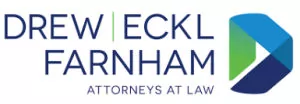On March 14, 2020, the United States House of Representatives passed the Families First Coronavirus Response Act (FFCRA). President Trump signed the bill into law on March 18, 2020. It will go into effect on April 2, 2020 (fifteen days from the date of the President’s signature), and will expire on December 31, 2020. As enacted, the FFCRA applies only to private employers with 500 or fewer employees. All public agencies with at least one employee are covered.
As you are likely already aware, the topic of providing paid leave for employees has been a subject of great debate for many years. To offset the cost to employers of providing the paid leave provided by the FFCRA, employers will be provided with a tax credit up to the limits described in detail, below.
The speed with which this law was enacted presents challenges for employers struggling to keep up with the rapid-fire change set in place by the COVID-19 pandemic. In the coming days, we expect that both the Department of Labor and the Internal Revenue Service will issue implementation guidance, and we will keep you updated as we receive more information.
Emergency Paid Sick Leave
Under the FFCRA, full-time employees are entitled to receive 80 hours of emergency paid sick leave. Part-time employees are entitled to receive an amount of paid sick leave equivalent to the average number of hours they work during a two-week period. Employers are prohibited from requiring an employee to exhaust “other paid leave provided by an employer” before using emergency paid sick leave. However, the bill appears to allow employers who already provide sick leave covering COVID-19 absences to apply their existing sick leave to meet this requirement.
Employees may use emergency paid sick leave when:
- The employee is subject to a federal/state/local quarantine or isolation order relating to COVID-19;
- The employee has been advised by a health care provider to self-quarantine due to concerns relating to COVID-19;
- The employee is experiencing symptoms of COVID-19 and awaiting diagnosis;
- The employee is caring for an individual subject or advised to quarantine or self-isolate;
- The employee is caring for his or her son or daughter if their school or place of care has been closed, or childcare is unavailable due to COVID-19 precautions; or
- The employee is experiencing any other substantially similar condition specified by the secretary of Health and Human Services in consultation with the Secretary of the Treasury and the Secretary of Labor.
Employees who are sick themselves can receive their full pay up to $511.00 per day, up to a maximum of $5,110.00.
When sick leave is used for caring for a son or daughter, pay is limited to up to $200.00 per day, up to a maximum of $2,000.00.
New Public Health Emergency FMLA Leave
As you know, FMLA traditionally only applies to employers who employ 50 or more employees. However, the leave provided under FFCRA applies to all employers with fewer than 500 employees.
Unlike other categories of leave under the FMLA, the public health emergency FMLA leave is available to any employee who has been employed for 30 calendar days. This “qualifying need” is limited to circumstances where an employee is unable to work (or telework) due to a need to care for a minor child if the child’s school or place of child care has been closed or is unavailable due to a public health emergency.
Under this new category of FMLA Leave, the initial ten (10) days of such leave are unpaid – unless the employee voluntarily chooses to use any PTO, vacation leave, personal leave or sick leave to use during this time period. Employers are prohibited from requiring employees to exhaust existing paid leave during this time period. After the initial ten-day period expires, employees are to be paid at a rate that is “at least two-thirds of the regular rate” the employee would have earned under a normal work schedule. The amount of required pay for leave is limited to no more than $200 per day and $10,000 in the aggregate.
Emergency FMLA leave taken is generally job-protected, meaning the employer must restore employees to their prior positions (or an equivalent) upon the expiration of their need for leave. FFCRA includes an exception to this requirement for employers with fewer than 25 employees, if the employee’s position no longer exists following leave due to operational changes occasioned by a public health emergency (e.g., a dramatic downturn in business caused by the COVID-19 pandemic), subject to certain conditions.
Limitations to FFCRA Leave for Certain Employees
FFCRA permits the DOL to exclude health care providers and emergency responders from the definition of employees who are allowed to take leave under the FFCRA, and to exempt small businesses (defined as those with fewer than 50 employees) if the required leave would jeopardize the viability of their business.
Penalties for Non-Compliance and Prohibition Against Retaliation
FFCRA prohibits covered employers from retaliating against any employee who takes leave in accordance with the new law. The law further provides that the failure to pay required sick leave will be treated as a failure to pay minimum wages in violation of the Fair Labor Standards Act.
The content of this article is intended to provide a general guide to the subject matter. Specialist advice should be sought about your specific circumstances.



